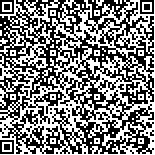下载中心
优秀审稿专家
优秀论文
相关链接
摘要

半经验、核驱动二向性反射分布函数(BRDF)模型是多角度遥感领域的一个重要模型,其热点效应在应用BRDF反演其它地表参数时有重要作用。本研究针对树冠内部叶片的间隙对热点的影响,对几何光学核的重叠函数进行热点效应的改进,并利用POLDER多角度观测数据集,对改进热点效应后的不同核函数组合模型的最优热点参数进行了确定。通过最小均方根误差(RMSE)筛选出最优热点参数,进一步分析不同模型对热点参数的敏感性和RMSE随热点参数的变化情况。结果表明:(1)该热点参数化方法可用于Ross-Li核驱动模型不同核函数组合的情况,热点校正后的模型相对于原模型很好地改善了对热点反射率的拟合能力;(2)热点参数最优值在几何光学核为LSRC (LiSparseRChen)与LDRC (LiDenseRChen)组成的模型中出现明显差别,C1在LDRC模型中的值远小于LSRC模型,主要是因为LDRC核函数自身较好考虑了树冠尺度下的热点效应,所以该热点参数改进方法起到的补偿作用较小;(3)总体上,同一模型的C1参数比C2参数对热点的变化更敏感。本研究为Ross-Li核驱动模型的热点效应进一步校正及热点参数的取值范围提供了依据,对Ross-Li模型的推广有重要意义,改进热点效应后的模型可用于未来国产多角度卫星的数据处理流程中,以获取加精确的地物热点反射率信息。
The semi-empirical kernel-driven linear bidirectional reflectance distribution function (BRDF) model is important and has been widely used in the remote sensing community. The hotspot signature is an important characteristic of the BRDF shapes and is commonly quantified by two degrees of freedom:the hotspot height and width near the hotspot direction.
This research aimed to correct the hotspot effect of the Ross-Li BRDF model for potential users by correcting the Ross and Li kernels with an exponential function of two hotspot parameters (C1/C2). This method has been developed in previous studies, but it was comprehensively applied to other kernel functions in the current study. Given the gap between leaves in the canopy, we corrected the overlap function of GO kernel with hotspot function. We analyzed the two hotspot parameters for the Ross-Li model by using the entire archive of POLDER BRDF database. First, we used six combinations of Ross and Li kernels to fit a typical single POLDER data for a specific analysis. We also analyzed the sensitivity of C1/C2 for these model combinations using the single POLDER pixel. Second, we used the entire POLDER dataset and acquired the optimum values of the hotspot parameters by using the root mean square error (RMSE) method. Finally, we analyzed the sensibility of the hotspot parameter in each model using 2D contour plots that distinctly show the variations in RMSEs as functions of C1 and C2. (1) The proposed hotspot parameterization method could be used to various combination models of Ross and Li kernels. The model with such a hotspot correction method improved the fitting ability of the hotspot signature better than the original model. (2) The optimum values of two hotspot parameters were significantly different between models, especially for the two geometric optical kernels, namely, LiSparseRChen (LSRC) and LiDenseRChen (LDRC). The value of C1 parameters in the LDRC models was generally smaller than that in the LSRC models. The possible reason could be that the LDRC kernel function modeled the hotspot effect on the canopy scale accurately, such that the role of the hotspot parameters (especially for C1) was secondary in this situation. (3) In general, the value of the C1 parameter in a single model was more sensitive to the variation in hotspot effect than the C2 parameter.
This study comprehensively corrects the hotspot effect of the Ross-Li model for various applications for potential users who pay attention to the hotspot signatures of their applications. This study is also valuable for domestic multi-angle satellites in accurately reconstructing future hotspot signatures from multi-angle observations.

